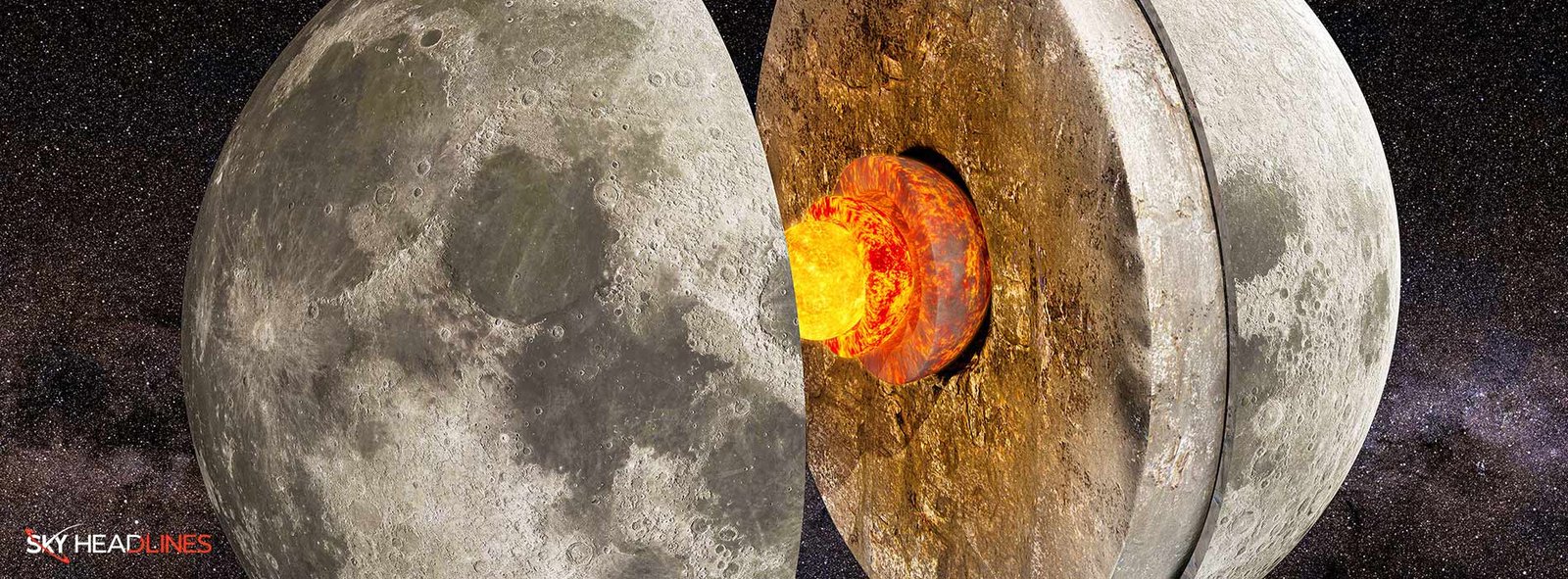Scientists have used earthquake data to discover that the Moon’s inner core is a solid ball with the same density as iron. The finding settled the controversy over whether the Moon’s inner core is solid or liquid and may help explain its history and the Solar System. Astronomer Arthur Briaud and his team from the French National Centre for Scientific Research used data from space missions and lunar laser ranging tests to map the Moon’s features and found that its core is similar to Earth’s, with a fluid layer on the outside and a solid core in the middle.
Moon’s inner core – A solid ball of Iron:
A thorough study has shown that the Moon’s inner core is a solid ball with the same density as iron. Scientist aims to end this long-running debate about whether the Moon’s inner core is solid or liquid and lead. For better acknowledgment of the Moon’s history and, by extension, the history of the entire Solar System.
“Our results,” writes a team led by astronomer Arthur Briaud of the French National Centre for Scientific Research in France, “question the evolution of the Moon magnetic field thanks to its demonstration of the existence of the inner core and support a global mantle overturn scenario that brings substantial insights on the timeline of the lunar bombardment in the first billion years of the Solar System.”
How did scientists find out about the Moon’s inner core?
Using earthquake data is the best way to find out what things are made of on the inside of the Solar System. Scientists can make a detailed map of the inside of a planet or moon by looking at how quakes send out acoustic waves that move through and bounce off of the stuff inside.
Apollo Mission:
We have acoustic data from the moon that was collected by the Apollo mission, but it’s not clear enough to tell what’s going on in the inner core. We know there is a flowing outer core, but no one can agree on what it is. Based on the Apollo data, both models of a solid inner core and a core made of only fluids work well.
Briaud and his colleagues put together a profile of the moon’s different features using data from space missions and lunar laser ranging tests. They did this to find out the answer for sure. Some of these are how much its shape is changed by Earth’s gravity, how its distance from Earth changes, and how dense it is.
Next, they did models with different types of cores to see which one fit the observational data the best.
What did the researchers find about the density and size of the Moon’s inner core?
They found out a lot of interesting things. First, the models that best fit what we know about the Moon show that deep inside the lunar crust, there is a lot of activity. This means that the dense stuff inside the Moon sinks toward the center, while the less dense stuff rises. This has been suggested for a long time as a way to explain why some elements are found in volcanic areas of the Moon. The study done by the team is another piece of evidence that shows that “for” is right.
Fluid Outer layer:
And they found that the moon’s core is a lot like Earth’s, with a fluid layer on the outside and a solid core in the middle. According to the research, the outer core is about 362 kilometers (225 miles) in diameter. However, the diameter of the inner core is about 258 kilometers (160 miles). That is about 15 percent of the Moon’s whole diameter.
The team found that the density of the inner core is also about 7,822 kg per cubic meter. That’s a lot like how heavy iron is.
What did a previous study in 2011 found about the Moon’s inner core?
In 2011, a team led by NASA Marshall planetary scientist Renee Weber using Apollo data and the most advanced seismological methods at the time to study the lunar core found the same thing. They discovered a solid inner core around 240 km in diameter and 8,000 kg/m3.
A study done by Briaud:
Briaud and his team say that their results back up those earlier ones and make a pretty good case for a lunar core like Earth’s. This reveals interesting changes in the Moon throughout time.
Why is knowing about the Moon’s inner core important?
The Moon had a strong magnetic field shortly after its formation. This field began to weaken about 3.2 billion years ago. This kind of magnetic field is caused by movement and convection in the core, so knowing what the lunar core is made of is very important for understanding how and why the magnetic field vanished. Since people hope to go back to the Moon soon, we might not have to wait long for seismic proof of these results.





